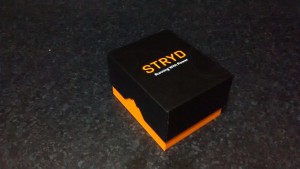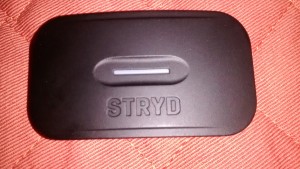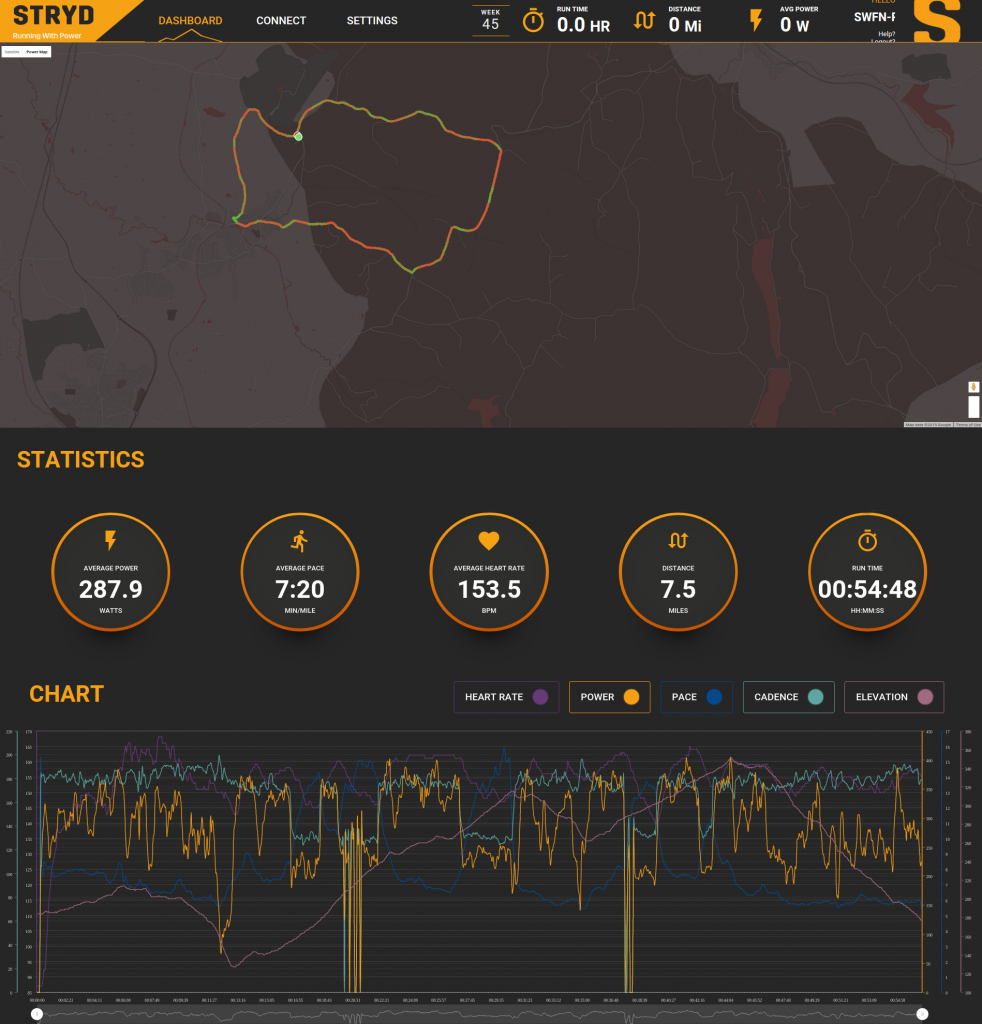This is a first impressions post about the new Stryd module which is the first device to specifically measure power whilst running.
For cyclists, power has been a metric which has been used for years to measure performance and training. Runners have traditionally used heart-rate analysis for training. The advantage of heart rate has been that one can measure how hard one is working and to tailor the workout according to the level of intensity required.
Power is another way of doing something very similar. Effectively Power is a function of Force multiplied by Velocity; thus by adding in the runner’s mass and taking all the other metrics we already have, it’s almost surprising that it hadn’t already been done. I mean, I know my mass is stored in a variety of fitness applications.
Clearly it’s not a simple calculation and Stryd have an algorithm to get a ‘live’ figure as well as an average overall number for each run.
Introducing Stryd – Running with power
Anyway, on Monday the DHL driver delivered this rather nice box (albeit in secure wrapping from Hong Kong)
Diving into it there was a simple instruction sheet, a chest strap and the Stryd module itself
Stryd have been actively communicating with the backers in their Kickstarter campaign and put together a self-help video to show users how to connect the module, which is dual ANT+/BLE, to your running watch.
Although the Garmin Fenix Series are supported, as I’ve got the older Fenix 2 watch, pairing the module was slightly trickier than it’s more modern sibling.
In short, as the watches don’t know about power modules for runners, you need to pair up the module whilst in bike mode where it expects to find power. Clearly as the technology becomes more mainstream, this aspect will change, but for now, it’s a hoop to jump through.
On the rather active support forum club.stryd.com one of the users helpfully spelt out the magic required to make the Fenix 2 see everything:
- For HR: Settings -> Sensors -> Heart Rate -> Status -> New Search
- For Power: Settings -> Sensors -> Power -> Status -> New Search
This was far easier than my first attempt which had me wearing two chest straps which wasn’t the most comfortable experience!
Now without my Garmin HRM-RUN module, the full running dynamics information isn’t recorded (although Stryd do say that they capture the majority of it and it will become available in due course). That said, there has been many questions as to exactly what one is supposed to do with a lot of this data. Yes it’s nice to know your vertical oscillation, but practically how much can you actually do with it?
The final piece of the jigsaw before one can take this new bit of tech on the road is to use the mobile app (available from Google Play and the Apple App Store) to enter your mass, so that all the information is ready to start calculating the power details. I understand that firmware upgrades will be done via the mobile app as well (possible already on iOS, Android available something in early November).
Now one of the drawbacks of being in the ‘pioneer’ phase of the technology as I mentioned earlier is that the main sport sites aren’t really set up to expect power to be an available metric for runners. In fact to make the power results appear on Strava one has to label the runs as cycle rides, which is far from idea. As I’m still trying to understand power data, and how I should be interpreting it, I’m leaving it all on the Styrd website, which looks a little bit like this:
So we can see the mapping has been pulled in from the Garmin watch as has the pace and run time. The Stryd module has provided the Power and HR measurements and I think the Cadence as well (on Strava the Cadence figure is doubled compared to the Garmin output, which makes me believe it’s Stryd that’s producing the number rather than the watch itself).
Accepting that with five outputs onto the graph it’s somewhat messy, the power measure behaves as one would expect, with the two points where I ended up walking (pace line goes up to reflect a longer period to cover the ground) showing my power output dropping, and that when I’m running uphill at the same pace as I am going downhill, the power required to take me up is greater than it is when I’m cruising down along with gravity.
My immediate understanding about power training is that when one understands the maximum power which can be sustained for an hour, one can compare the ‘live’ power rate to understand whether or not they are pushing too hard, too early, and thus the power will drop off after time due to exhaustion. Indeed, as an independent figure which is ignorant of one’s physical state on any particular day, the theory is that it should be a more accurate training tool than trying to stick within a specific heart rate zone. Heart rate whilst dependent on the impact of any stress/exercise is also affected by fatigue, illness, and other factors which could affect how any measurement might be taken.
Much of this is actually far beyond the training I’m doing, but the theory of using such a system still stands. If one can find the optimum training at any time, and to tweak any variables wherever possible, the effort is more likely to be rewarded with an improved performance. Which is ultimately what a lot of running is about. Sure it’s nice to get out and I know I’m never going to win any competitive races, but to know I’m improving against myself is a constant goal.





Be the first to comment on "Stryd – Running with power"